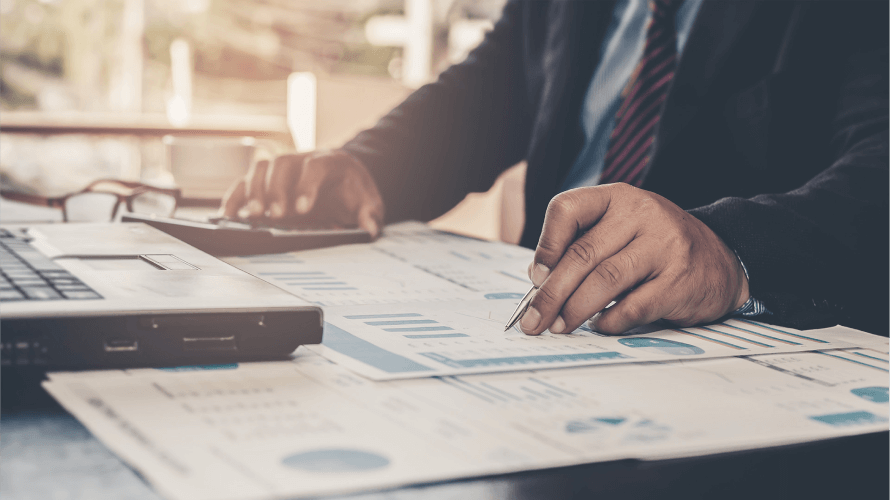Most things in life come with a certain risk-to-reward ratio.
But in no sphere is this more clear than in the financial markets. Investors who take risks either reap enviable rewards or face hefty consequences — a fact of trading that scares away the more risk-averse among us.
Luckily, high risk isn’t inherent to trading. With a touch of fundamental analysis, you can significantly minimize the risk associated with trading — whether you’re focused on stocks or crypto coins.
But first: what is fundamental analysis? Basically, it applies certain microeconomic facts (company performance, for instance) and macroeconomic factors (industry performance) to calculate an asset’s intrinsic value.
That brings us to our next definition — intrinsic value represents the true value of an asset and incorporates both qualitative and quantitative aspects of a business. It exists as a counterpart to market value — the amount for which you can buy/sell an asset.
Put together these seemingly juxtaposing definitions of value, and you’ll get a helpful assessment of an asset’s price. It’s pretty easy to understand: if the intrinsic value is higher than the market price, then the asset is undervalued; if the intrinsic value is lower than the market price, then the asset is overvalued; and of course, if the two are equal, then everything is just right.
Now, let’s get to the good stuff: the use case. When choosing whether or not to invest in a specific coin or asset, you’ll assess several aspects of the coin to get a feel for its viability and growth potential.
Do your homework.
Before you invest in any asset , you’ll want to know who is working on it and what their plans are. Look into the company related to the asset, be it a stock or a crypto coin to get an understanding of their business strategy, how they plan to expand, and whether those plans seem realistic. If you’re looking into forex trading, check the economy status in the currency’s issuing country and read up on current events (wars, natural disasters, elections etc.) that might affect its value.
Typically, you should be able to find all of this information and more on the company’s website and/or white paper. Obviously, the more time and energy you devote to research, the more informed you’ll be about your investment (or rather, whether you should invest at all).
It may also be worth looking into competing companies, so you can gain a sense of how your potential investment might fare in the free market.
Crunch some numbers.
Whether you’re investing in a stock or a crypto coin, it’s important to take a good, hard look at the numbers before you put any money on into it.
When you’re diving into the nitty gritty details of your potential crypto investment, make sure to pay special attention to the coin’s market cap. Why the market cap? You ask. That’s a very good question. The market cap will give you a feel for relative size of this cryptocurrency compared to others. If you can’t find the exact number online or in the company’s white paper, just multiply the token’s supply by its current price. A higher market cap means higher value, means less volatility.
It’s also worthwhile to search the web for tangible results: track down their marketing campaigns, press placements, and online communities, including Slack, Telegram, Facebook, Twitter, Medium, Steemit, etc. Paying attention to these details — what media outlets are talking about them, the size of their online communities, feedback — will help you spot red flags.
For stocks, you’ll want to take a peek at the company’s financial statements to get an idea of how they’re performing. A good place to start is the income statement, where you’ll find all revenue and earnings information. To calculate profits, you can put those good ol’ elementary school arithmetic skills to good use by taking that companies revenue and subtracting their expenses. As you probably guessed, higher profit is a good sign.
You may also want to glance over the balance sheet, where you’ll find all the information you could want on what that company owns and owes — an telltale sign when it comes to the health of the company.
Bear in mind that this certainly isn’t a foolproof plan — future estimates are just estimates, after all — it can give you a solid sense of a company’s future valuation.
Don’t forget about regulations.
It’s important that we don’t forget that no market exists in a vacuum. They’re all part of the larger economy, and regulations and policies on crypto, in particular, are evolving daily. So, when you consider investing in a coin or stock, ask yourself: how could regulations affect my investment? For instance, countries banning the use of crypto or a certain coin may cause the price to drop.
Though this research is a good place to start, it’s certainly not the end of your asset-analysis journey. There is a whole world of fundamental analysis out there, and we’re only scratching the surface here. Stay tuned for more to come!
Stay up to date with all things Capitalise — join us on Telegram!
